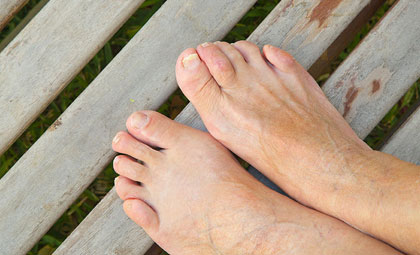

Ingrown Toenails
Ingrown Toenails develop when your nail grows into the surrounding flesh. They most commonly occur in the big toe. The symptoms are usually pain, redness, and swelling. Risk factors for ingrown toenails include poorly fitting shoes and poor foot hygiene.
A warm water soak can help to provide relief. Your doctor might suggest antibiotics to help treat the area. You may need to have a portion of the nail trimmed or removed if there is a severe infection.
Causes
- Heredity. In many people, the tendency for ingrown toenails is inherited.
- Improper trimming. The most common cause of ingrown toenails is cutting your nails too short. This encourages the skin next to the nail to fold over the nail.
- Improperly sized footwear. Ingrown toenails can result from wearing socks and shoes that are tight or short.
Thickened Toenails
Infections, repeated pressure, aging, and trauma can all contribute to thickened toenails. You might notice that your toenails are yellow, brittle, and painful to touch.
If your nails are thick due to infection, you will need antifungal treatment. Your doctor may file and trim the nail plate to reduce thickness. In some cases, the nail needs to be removed completely.
Black and Blue Nails
An injury to the skin underneath the nail results in black and blue nails. Due to the nature of the condition, soccer players and runners may experience black and blue nails frequently. You can also have black and blue nails if you injure your toe or if you wear shoes that are too small. In addition to the physical change, your toes might be swollen or painful.
You can soak the toe and ice it in order to relieve some swelling and pain. Depending on the nature of the injury, your doctor might need to remove the nail or a drill a hole into it to relieve pressure.













